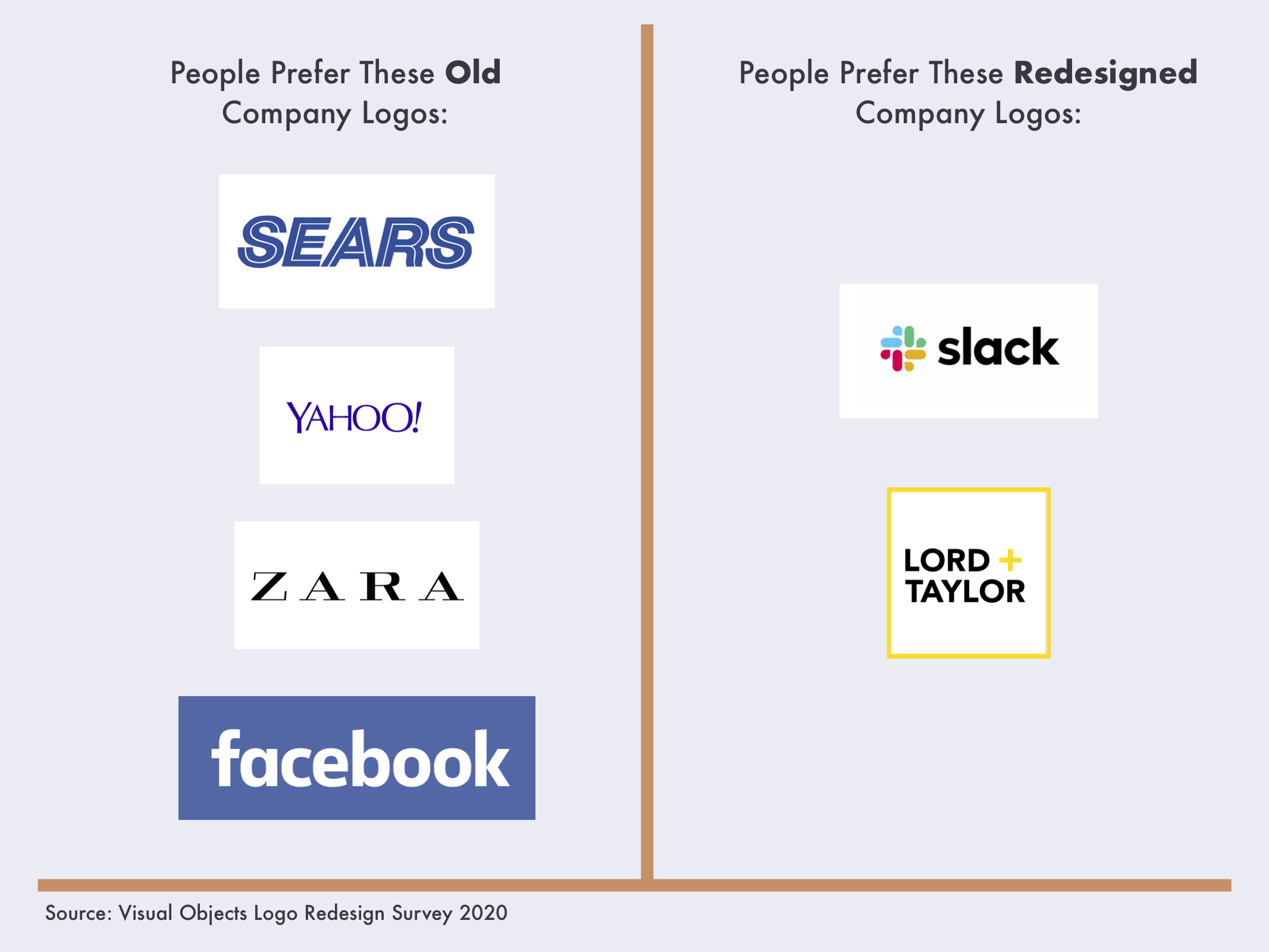A rebrand can make or break a business. In this piece, we’ll explore when a rebrand is necessary and the steps to get it right. We’ll also take a look at rebranding successes and failures to help reveal the path forward.
COVID-19 has changed everything, from consumer preferences to business forecasts. Companies looking to make a fresh start can use pandemic-induced lockdowns to revamp their brand.
A brand is a collection of images, colors, fonts, and styles that identify your company. Sometimes external or internal changes to your business make it necessary to change any of these marketing components.
In this article, we discuss when a rebrand is required, and steps to take to make sure your rebrand is a success.
1. Decide When a Rebrand is Necessary
The best rebrands are those with a distinct reason behind them. If you’re going to coordinate a successful rebrand, you’ll need to understand the importance of timing.
Here’s a look at the four main reasons to perform a rebrand:
Update Old Images or Branding
The world is a hectic place where consumer preferences turn on a dime. The breakneck pace of this change means that businesses are often left behind and find themselves stuck in the past.
That tired and outdated corporate brand can reflect poorly on a business and make it difficult for customers to build a sense of excitement and loyalty. If a business suffers from an outdated brand, it will need to execute a rebrand.
Shake Off a Poor Reputation
Some businesses might suffer significant reputational damage. In those instances, many businesses will turn to the power of rebranding to intelligently revive their brand and secure a fresh start. Rebranding isn’t intended to simply paper over serious issues, but it’s an important step in reviving a business.
Take Facebook and its new empathetic color scheme, for instance. Frequent visits to Capitol Hill in recent years and lots of time in the (negative) spotlight have inspired the social media giant to tell a new story with its branding.

Expand Into New Areas
In today’s interconnected marketplace, new opportunities emerge and disappear in a flash. Businesses regularly decide to offer new products or expand into new territories and this will often require a fresh rebrand.
Imagine a business that decides to transition from the national to the international stage, for instance. That business will have to invest a significant amount of time into its deliberate and effective rebrand.
Stay Ahead of the Competition
A brand is so much more than a logo and a set of design guidelines. Statistics from Circle Research show that 77% of B2B marketing leaders say that branding is critical to the growth of their businesses.
Businesses will often adjust and rebrand their corporate identity in order to put themselves ahead of the competition and connect on a deeper level with their potential customers.
2. Research Your Audience and Market
The first step to any successful rebrand is a careful analysis of both your audience and the market. There are a number of tools and services that help brand strategists gauge public perception of their brand.
Here are some of the strategies that you’ll want to use:
Run Surveys
Surveys are a great way understand how customers perceive your brand. You could use market segmentation techniques to better understand the perspectives of your different customer groups.
Conduct Research Online
Brand managers can easily perform sentiment analysis by doing online research. You should visit key customer review platforms to audit how your brand is currently perceived.
Use Focus Groups
In-person or virtual focus groups are a great way to connect with your customers. There are a number of platforms that make it easy to discuss your brand and customer priorities in small groups.
Access Internal Knowledge
Leverage your company’s internal knowledge to better understand how customers perceive your brand. Run workshops with your sales and customer support teams, for instance, who will have lots of insight from their experiences interfacing with customers.
3. Develop Your New Mission and Values
Vision, mission, and values communicate the core of your business to current and potential customers.
First, identify a compelling vision to guide your brand. This vision is a description of the ideal world that you want to help bring about.
The vision statement for the Alzheimer’s Association, for example, is “A world without Alzheimer’s disease.”
This vision is clear and inspiring. You’ll need a similarly ambitious statement to guide every other decision you make for your brand.
A mission statement is more action-oriented than your vision. It’s the big-picture view of what your business is going to do to bring about your vision.
Tesla’s mission statement, for example, is “to accelerate the world's transition to sustainable energy.”
This mission statement is clear and catchy. Try to encapsulate your brand’s mission into one similar statement.
Your values are the guiding principles that you’ll use along the way to achieve your mission and realize your vision.
Statistics show that 89% of shoppers stay loyal to brands that share their values. This is why it’s so critical to develop a set of clear principles that will bring your brand to life
4. Make Necessary Changes to Your Brand Identity
You can bring your updated vision, mission, and values to life by applying each to your company name, brand guidelines, and tone of voice guidelines.
Company Name
The name of your business is critical. Your company name helps audiences identify with and remember your business.
To choose a great name, run a few brainstorming and focus group sessions with your customers or potential users. Choose a business name that reflects the vision, mission, and values that you outlined in the previous step, and incorporate any feedback from customers, investors, or other stakeholders.
Brand Guidelines
At this stage, it’s time to develop a more complete picture of the brand that you want to build. This can also help when it comes to naming or renaming your company.
Brand guidelines include colors, images, icons, fonts and other styles you want to associate with your brand.
Tone of Voice Guidelines
Branding is just as much about words and messaging as it is about visuals. During this process, develop strong tone of voice guidelines that bring your brand to life and distinguish it from other companies.
5. Create Updated Design Collateral
Once you’ve got a new identity and brand guidelines in place, it’s time to bring your brand to life with a suite of collaterals. Collateral includes materials such as:
Physical Media
Your design and branding team will need to create physical marketing materials and templates such as:
- Flyers
- Signage
- Brochures
- Business cards
- Banners
Any merchandise that you will need at events, for employees, or for customers should be updated with your new brand and design.
Digital Materials
Your design team will also need to manage and create a comprehensive suite of digital materials. These include things like:
- Logos
- Social media icons and headers
- High-quality images
- Fonts
- Website design
- Landing pages
Logos are an easy place to start when rebranding your business. Think about what you want your updated logo to convey about your business. Then, hire a team of designers to update the logo for you.
It's important to consider how customers will receive your new logo. Here are a few examples of brands that redesigned their logos in 2019 and how consumers perceived them.

These digital materials will represent your brand online and can be shared with external stakeholders.
6. Coordinate the Brand Launch
Now that you’ve got everything in place, it’s time to actually launch the brand. You should use proper team communication tools to keep all team members in the loop.
It’s critical that businesses are able to conduct a rebrand in a logical and cohesive way. If you blend together your old and new brand at the same time, you’ll cause confusion and reduce the powerful impact of your brand reveal.
Successful Rebrands Require Planning and Patience
We hope that this piece has given you a good introduction to the complex and potent world of rebranding.
As you can see, there are lots of areas that you’ll need to master and a solid strategy is the key to success along the way. If you’re going to succeed, you’ll want to keep a close eye on your strategy and use a very methodical approach to avoid poor results.